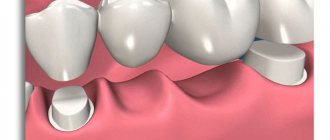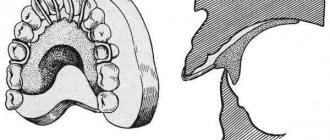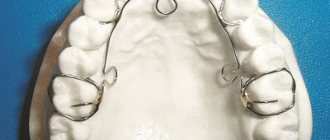Medical diagnoses often include a definition of the sagittal size of the spinal canal. Most patients do not understand this definition, which causes them natural concern. What is sagittal size, how does it affect human health, what are the physiological indicators, what causes the deviations and what are their consequences? These questions will be answered in this article.
Sagittal size of the spinal canal
What is a canal in the spine
You should know this in order to more easily understand further, more complex information. The spinal canal is a longitudinal cavity located along the vertebra. It is formed on one side by the posterior wall of the vertebrae, and on the other by flexible discs and vertebrae. Thus, it is limited on all sides by bone tissue, and the diameter of the spinal canal changes depending on the parameters of the vertebrae. The bases of the arches of each vertebra have special connecting slots, with the help of which they are connected into a single spinal column. When connected, these arches leave openings that house the spinal cord.
The spinal canal is a container for the spinal cord, its roots and vessels
Strong ligaments are placed in a circle, they ensure stability of the body position and are able to absorb loads on the spine. Flexibility is ensured by elastic, strong ligaments that line the canal along its overall length. Due to the structural features of the vertebrae, the canal in the vertebra has different sizes depending on its specific location. Normally, the canal has an average area of 2.5 cm2, the maximum value is 3.2 cm2.
The canal has different sizes depending on the structure of the vertebrae
To ensure normal functionality, the volume of the canal must be greater than the volume of the brain membrane. The space free from the brain is filled with plexuses of capillaries and fiber. This space is called the epidural, and it is where pain medications are injected during anesthesia. The canal contains the spinal cord with its specific membranes and branches. Physiologically normal blood supply to the bone bodies of the vertebrae and their other parts is provided by three arteries.
Layout of the epidural space
Axes of the human body
There are three axes of the human body, they intersect with each other at an angle of 90 degrees:
- The vertical axis is the longest, it is directly perpendicular to the support on which the person stands.
- The transverse axis is parallel to the support.
- The sagittal axis divides the body from front to back.
Conventionally, it is possible to draw any number of transverse and sagittal axes through the human body. There is only one vertical axis, so it is also known as the main one.
The axes correspond to the planes of the body - sagittal, frontal and horizontal.
What is sagittal size
To characterize the state of the canal, the definition of sagittal size is used. The sagittal size characterizes the size of the spinal canal in the anteroposterior direction, from the uppermost section of the canal to the lowest. The dimensions on both sides of the conventional plane of the imaginary anatomical section are taken into account. Such definitions allow us to have a more complete understanding of the state of the spinal canal and enable physicians to specifically classify detected pathological changes in tissue alignment.
Sagittal plane
We focus on drugs
1.Laterally and medially
Lateral = far from the conventional middle of the body. Medial means close to the middle of the body. It’s very easy to remember - there is a well-known English word “middle”, which means “middle”. Accordingly, we remember - everything that is closer to the center of the body, that is, inside - medially. Everything to the side and further from the center of the body is lateral.
Let's look at an example. The clavicle (clavicula) has an acromial end (etremitas acromialis), let's find it in the picture and mark it in blue. Next, we will find the sternum (sternum) and highlight its jugular notch (incisura jagularis) in red. Let's compare the acromial end of the clavicle and the jugular notch of the sternum according to their location:
The jugular notch will have a pronounced medial position, as it is very close to the center of the body. The acromial end of the clavicle will be located lateral to the jugular notch, since it is further from the middle of the body than this notch.
2. Distal and proximal
In the speech of anatomists or surgeons, you can often hear phrases like: “fracture of the distal phalanx of the finger,” “proximal convoluted tubule,” “move the skin in the proximal direction.” What does it mean?
“Distal” means “far from the beginning, from the top, from the body.” “Proximal” means “close to the beginning, to the top, to the body.” To simplify, proximal = close, distal = far.
We remember it very simply. The word "distal" has the same root as the word "distance". “At a distance” - “far”. Accordingly, “proximal” means “close”.
The simplest example is that the nail is located on the distal phalanx of the finger. I highlighted the distal phalanx of the finger in red, and the proximal phalanx in blue. Elementary, isn't it?
3.Ventral and dorsal
Two more terms that you might often hear from various anatomy teachers. To forever remember the meaning of these terms, you need to remember the translation of the word “ventriculus” - stomach, or the word “dorsum” - back. The root "ventr" is related to the Latin "ventriculus" - that is, the stomach, which, as you know, is located in the abdominal cavity. Accordingly, “ventral” means “located on the abdominal side,” and “dorsal” means “located on the back.”
Geometric shapes of sagittal size
The so-called sagittal section changes depending on age, up to 20 years it increases, up to 50 years the parameters are stable, and later due to degenerative and dystrophic processes they decrease. These are normally occurring physiological processes; medical science cannot currently influence them. The sagittal size in the lower lumbar region decreases most with age, hence the frequent back pain in older people.
Normal dimensions of the spinal canal
Normal cross-sectional values in the area of 3–4 vertebrae are ≈ 17 mm and remain the same throughout life. If the size decreases to 13 mm or less, then this is a clear sign of pathological changes in the spinal canal. But for the normal functionality of the spinal cord, not only the area, but also the configuration of the canal is important.
X-ray – spinal canal stenosis
Anatomical characteristics of sagittal size
The canal begins at the point where the spinal nerve departs from the entrance (dual sac). In the area of the vertebrae of the neck, it is directed forward and outward. The posterior wall is the plate of the arch, limited by the upper process. This arrangement affects the formation of shapes and sagittal dimensions. The absolute parameters of the channel and nerve indicate the capabilities of the body's protective reserves. Between both anatomical formations there is a free space that can, to a certain extent, compensate for degradation or physical damage to the vertebrae and adjacent tissues.
Sagittal and frontal diameters of the spinal canal
The difference in these sizes shows the protective function capabilities of the body, and their ratio, taking into account the contents, characterizes the reserve space of the spine. In normal condition, the central spinal canal has a space of no more than 5 mm. It is greatest in the upper spine, where the reserve reaches a maximum of 7 mm. The reserve is least in the latinal recess; in this place the free space does not exceed one millimeter, but in practice it is often completely absent. It is in this place that the risks of impaired nerve functionality as a result of degradation or damage to the vertebral discs are greatest.
If you want to learn in more detail the structure of the human spine, its sections and functions, and also consider the causes of diseases, you can read an article about this on our portal.
Anatomical planes
Many students confuse this basic thing. There are three main anatomical planes: sagittal, frontal and horizontal.
If you don’t remember geometry at all and have no idea what a plane is, imagine that we are talking about a thin but very sharp metal sheet with which we will saw an anatomical object. After we make the necessary cut, we will leave the metal sheet in the same place.
The Internet is full of pictures like this:
The planes are shown here quite clearly and they fit my analogy, only the conventional “sharp metal sheets” here are also multi-colored. The red “sharp leaf” is the sagittal plane. Blue - frontal plane. Green - horizontal plane.
Let's look at each plane with individual examples
1.Sagittal plane
The name of this plane comes from the Latin word sagitta, which means "arrow". Let's look at the illustration of the brilliant Da Vinci: this is exactly what the skull (cranium) will look like if we cut it into two equal halves in the sagittal plane:
The sagittal plane is also sometimes called the “profile” plane. Excellent expression, much better remembered. We cut the preparation to look at its insides in profile. Here is a tablet with a sagittal section of the head:
The sagittal plane divides the human body into right and left halves.
2. Frontal plane
Just in the last article about the masticatory muscles (musculi masticatorii), we looked at a skull sawn in the frontal plane. Let me remind you of this picture:
Let's look at the whole skull from above:
And now let’s cut it in the frontal plane:
The frontal plane divides the human body into the front and back. It's easy to remember without getting confused: "front" is an English word that means "in front", "front". Imagine, for example, a skull and divide it roughly into the front and back. The plane that will separate them will be the frontal one.
3.Horizontal plane
This plane is often found in diagrams and presentations on topographic anatomy. You can also see CT and MRI images in the horizontal plane. For example, this picture of the brain is taken in a horizontal plane. We clearly see a formidable neoplasm in the right temporal lobe (lobus temporalis dexter):
The horizontal plane is well suited to examine in detail the cavity or layered structure of the limb. This is what makes it so popular among representatives of radiation diagnostics and topographic anatomy.
The fascia of the neck is best viewed in a section in the horizontal plane:
So that you don’t get confused, I decided to highlight several formations that are familiar to you:
- The cervical vertebra (vertebra cervicalis) is highlighted in green (in the shape of the letter “T”);
- The bright yellow ring just above is the esophagus (oesophagus);
- Even higher is the red ring - the trachea;
- In front it is covered by a blue horseshoe - the thyroid gland (glandula thyroidea). From this perspective, it is clear why it is called the thyroid.
The horizontal plane divides the human body into upper and lower parts.
Causes of pathological changes in the sagittal size of the canal
The sagittal size in the vast majority of cases decreases; expansion is possible only as a result of very severe spinal injuries that cause a violation of the integrity of the vertebrae. Such situations arise after strong mechanical impacts and cause extremely negative consequences, including general paralysis or death.
Spinal stenosis
A decrease in sagittal size parameters is caused by structural disorders of the vertebrae, which have a different nature of appearance. Negative changes can appear both as a result of congenital pathologies, and against the background of acquired diseases or the consequences of an unhealthy lifestyle. The primary pathological process is accompanied by anomalies in the development of vertebral arches, dysplasia, the formation of cords and other abnormalities in the development of the young body. Such pathologies should be identified in the early stages of development; a timely diagnosis allows medicine to completely eliminate the risks of negative consequences.
Consequences of changes in sagittal size
The first studies on narrowing of the spinal canal were published by the journal Portal in 1803. The pathology was discovered in patients with rickets and venereal diseases at a late stage. With the development of medical science and the expansion of the number of cases studied, the classification of painful conditions caused by a decrease in the sagittal dimensions of the canal has changed. If they are caused by sequestration and disc herniation, then these conditions of the body do not belong to stenosis. Stenosis, according to modern definitions, is a long-term and slow-in-area narrowing of the canal. At the same time, negative consequences accumulate gradually; doctors have time to use effective modern treatment methods. Based on the actual values of the sagittal size of the canal, the narrowing criteria are determined and the final diagnosis is made.
Spinal stenosis - diagram
Table. Main types of stenosis.
| Type of stenosis | Clinic of the disease |
| Absolute | The longitudinal size of the canal in the lumbar spine is ≤ 10 mm. An extremely serious condition of the body, in most cases causes disability. Full recovery without surgery is impossible. Conservative treatment gives intermediate results and is aimed only at slightly improving the patient’s quality of life. |
| Relative | Sagittal canal size ≤ 12 mm. The patient's condition can be improved only through conservative treatment; there are cases of complete restoration of patients' working capacity. |
Taking into account the specific area of the spine where the decrease in sagittal size is localized, the stenosis can be spinal, lateral or central.
Spinal stenosis is a chronic process characterized by pathological narrowing of the central spinal canal
Outpatient diagnostics aims to clarify not only the degree of narrowing of the canal, but also the geometry of the pathology and its nature. Taking into account these in-depth examinations, the type of stenosis is determined: total or intermittent, polysegmental or monosegmental, symmetrical on both sides of the vertebrae or unilateral.
- Total . The pathological narrowing permanently compresses the spinal cord. The situation is very difficult, the organs for which the compressed area of the brain is responsible are completely paralyzed.
- Intermittent . The decrease in sagittal size is point-like; areas with a normal cross-section alternate with areas with a reduced cross-section. The pathology affects the spinal cord over a relatively large extent.
- Monosegmental . The pathology concerns only one vertebra; neighboring areas have normal physiological indicators.
- Polysegmental . Deviations are found in two or more segments of the spine; the causes can be either congenital or acquired.
- Symmetrical . The spinal cord is compressed symmetrically on both sides or along the entire circumference. The pathology narrows the sagittal lumen in a ring-like manner.
- One-sided . The spinal cord is compressed in only one area, on the left or right side, in front or behind.
There are several types of stenosis
Posture: concept, norm
Ozhegov describes posture as a manner of holding oneself. Medical dictionaries characterize this concept as a habitual, relaxed, relaxed posture of a standing person. Two important factors determine posture: the level of muscle development and the position of the pelvis.
The sagittal plane of posture should be symmetrical. Correct, normal posture is characterized by:
- strictly vertical position of the head, slightly raised chin;
- strictly horizontal passage of the line of the forearms: angles symmetrical relative to each other, which form the lateral surfaces of the neck and the outlines of the shoulder girdles;
- a chest symmetrical relative to the medial plane, which does not protrude or sink;
- vertical abdominal region: the navel is located strictly on the line of the middle plane;
- shoulder blades pressed to the body, symmetrical with respect to the spine;
- parallelism of lines drawn through the popliteal fossa and gluteal folds;
- when viewed from the side: retracted abdomen, raised chest, straight lower limbs, the angle of inclination of the pelvic region is no more than 30-35 degrees.
Symptoms of a decrease in the sagittal size of the canal
Depending on the specific location where pathologies appear, the symptoms of the disease also change. But in all cases there is pain, it can be aching or shooting, local or diffuse, strong or weak. Increased compression causes increased pain; in the future, patients cannot do without painkillers.
If there is a problem in the lumbar spine, lameness, numbness in the legs, muscle weakness and impaired reflexes of vital functions appear. In complex cases, paresis of the limbs and dysfunction of the pelvic organs develop. In the last stages, neurodystrophic changes increase, and vegetative-vascular disorders begin. The last fourth stage of reduction in sagittal size leads to complete paralysis of the limbs.
Symptoms of lumbar stenosis
Diagnostics
An accurate diagnosis can be found only after a special outpatient examination of the patient. They necessarily include methods that allow you to visually see the state of the channel. Depending on the patient’s condition, radiography, computed tomography or magnetic resonance imaging may be prescribed. Based on the images obtained, an experienced doctor can draw the right conclusions and develop effective treatment regimens. We must remember that in some cases the disease can only be localized by surgical methods. These are very complex operations and have high risks of negative consequences.
MRI of the spine











